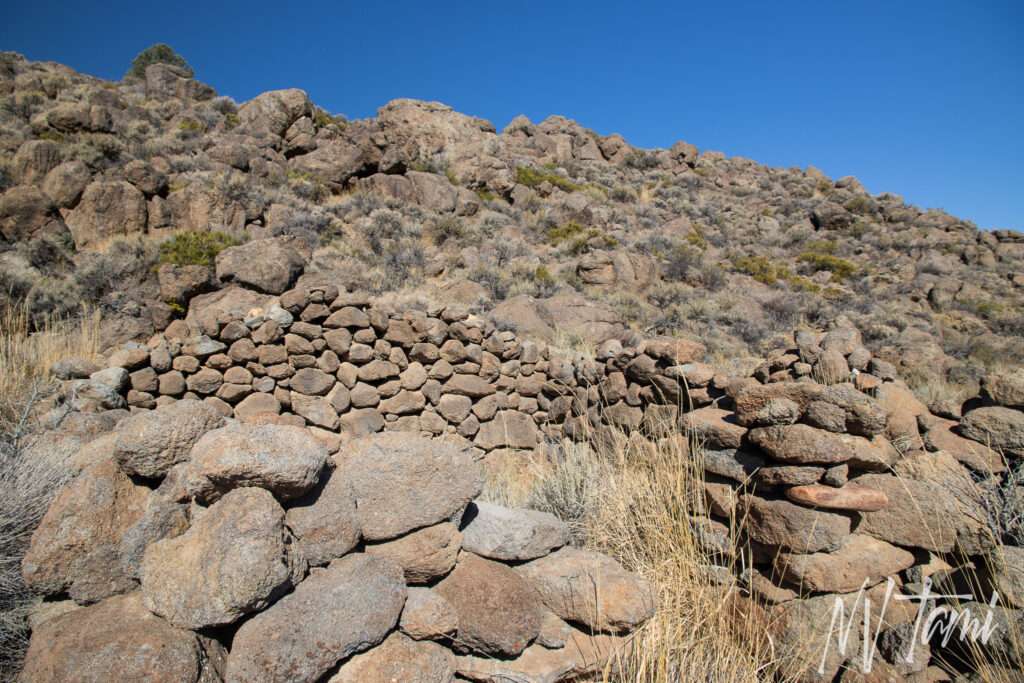
The eastern Sierra gold rush began in Dog Town, not nearby Bodie. Prospectors panned for gold and built dugout houses with rock walls. While the settlement soon became a ghost town, this was where it all started, on the confluence of the Virginia and Dog Creeks.
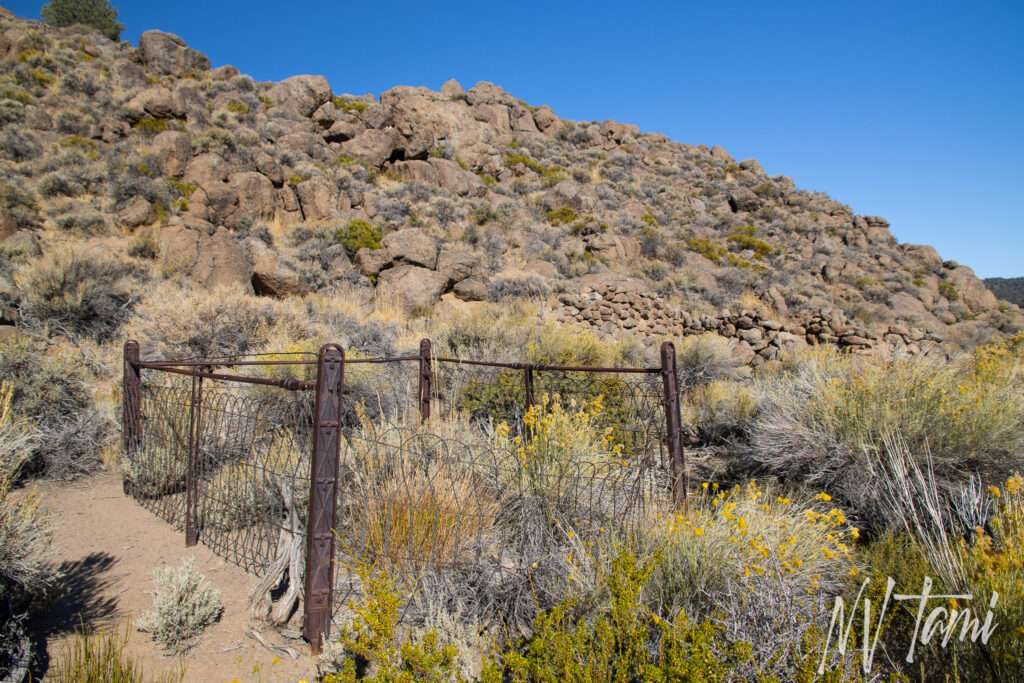
Even for a short-term town, it left us with questions. How did Dog Town get such an unusual name? Who was buried along the creek and why is the grave so close to the cabins?
Eastern Sierra Gold Rush
When people think of ghost towns and the gold rush east of the Sierra, Bodie is the first thing that comes to mind. How can it not? Bodie State Park is the best-preserved ghost town in the United States and possibly the world. Nothing compares to the number of buildings, many including furnishings.
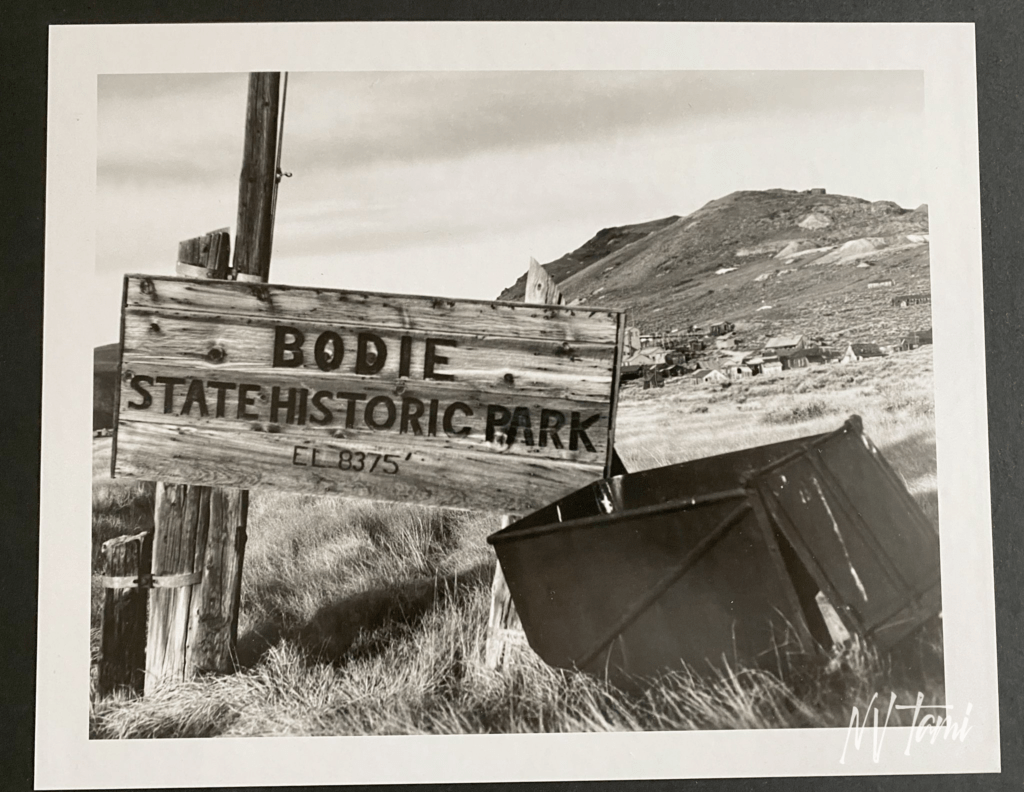
But Bodie was a relative latecomer. Bodie began in 1876, over two decades after other area settlements.
Dog Town Days
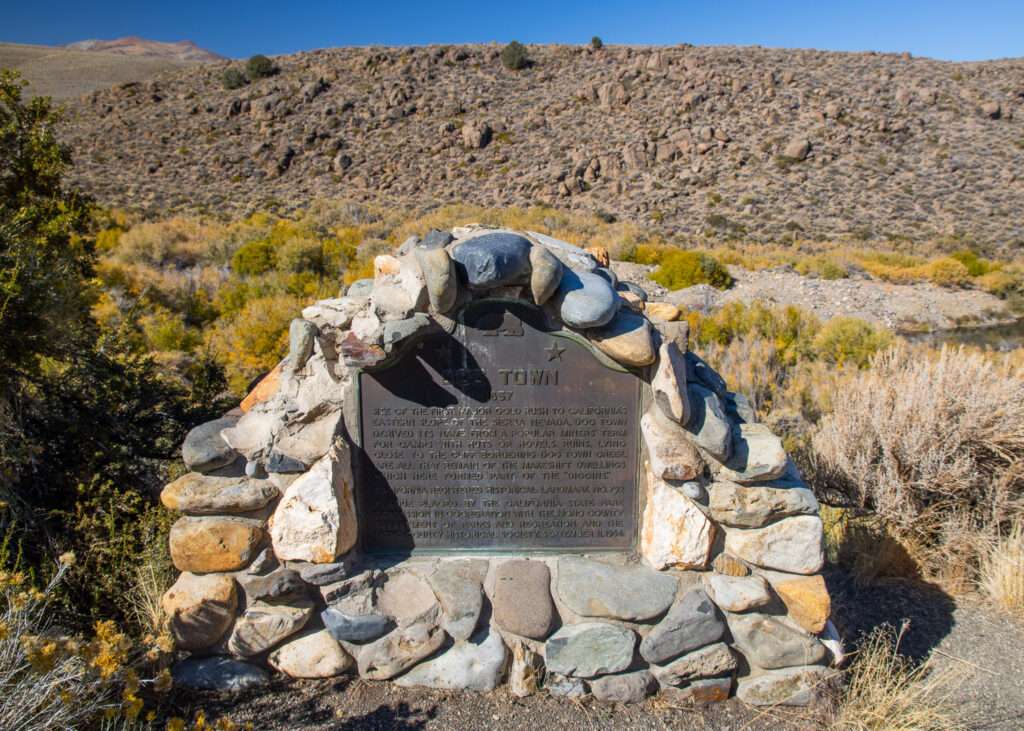
A trio of historic markers sit off Highway 95 and overlook Dog Town. Below, the road is gravel and marshy land covered in willows. Across the creek, you can spot stone foundations and a grave. The abandoned ruins fade into the desert, belittling their importance to the history of the eastern Sierra.
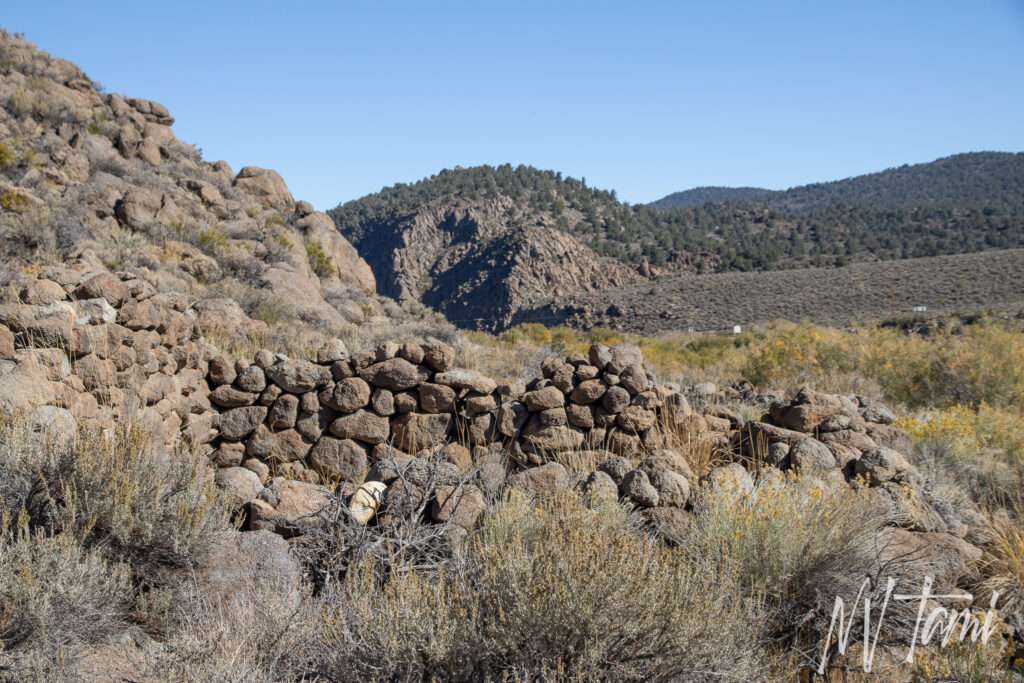

In 1857, German prospector Cord Norst and his wife Mary, a native American, set up camp on the creek. They built a dugout house with rock walls on the hillside and panned gold for a living.
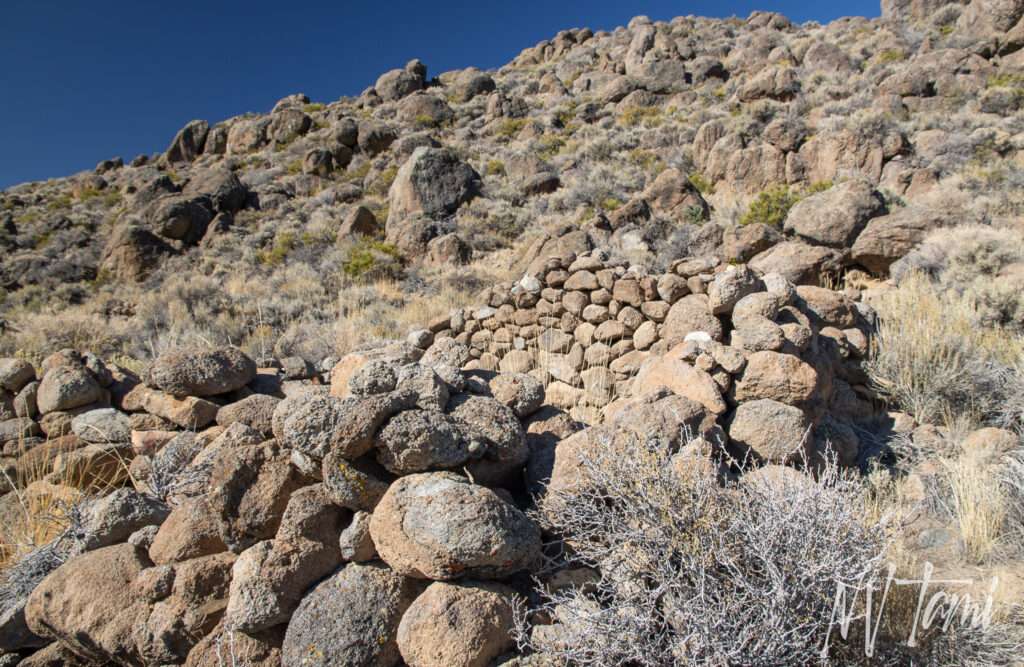
Hearing of their discovery, Mormons from Nevada headed south to stake claims along the creeks. Dog Town soon became a “bustling little community” of 100 miners.
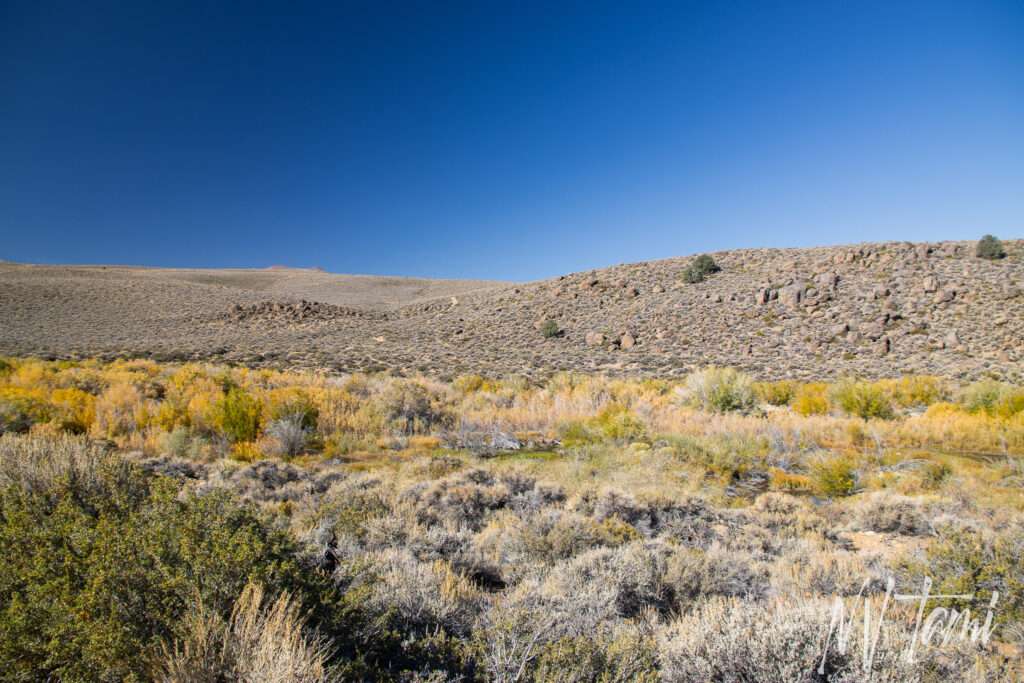
Dog Town was placer and hydraulic mining, unlike many mines on the eastern slope. This created the gravel fields we see today.
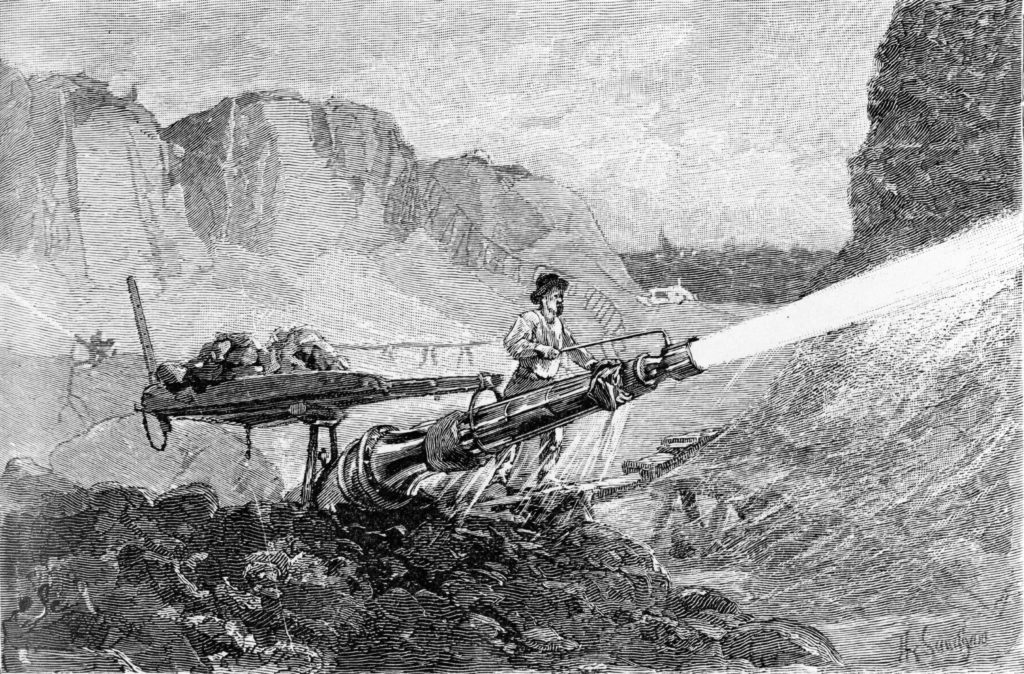
(Photo credit: Wikipedia)
On July 4, 1859, a town resident left the Independence Day festivities and wandered the hills east of Dog Town. He rested, picked up some dirt and found it contained gold. Most Dog Town residents relocated and created the new town of Monoville before anyone else could stake claims.

The Norst couple choose to remain at Dog Town. They homesteaded land and continued to pan gold, purchasing supplies in the new town of Bridgeport.

It is unknown how much Dog Town produced; it is thought that, along with Monoville, the miners extracted several million dollars in gold. While production is minor compared to Bodie, if it weren’t for Dog Town, Bodie might have never existed.
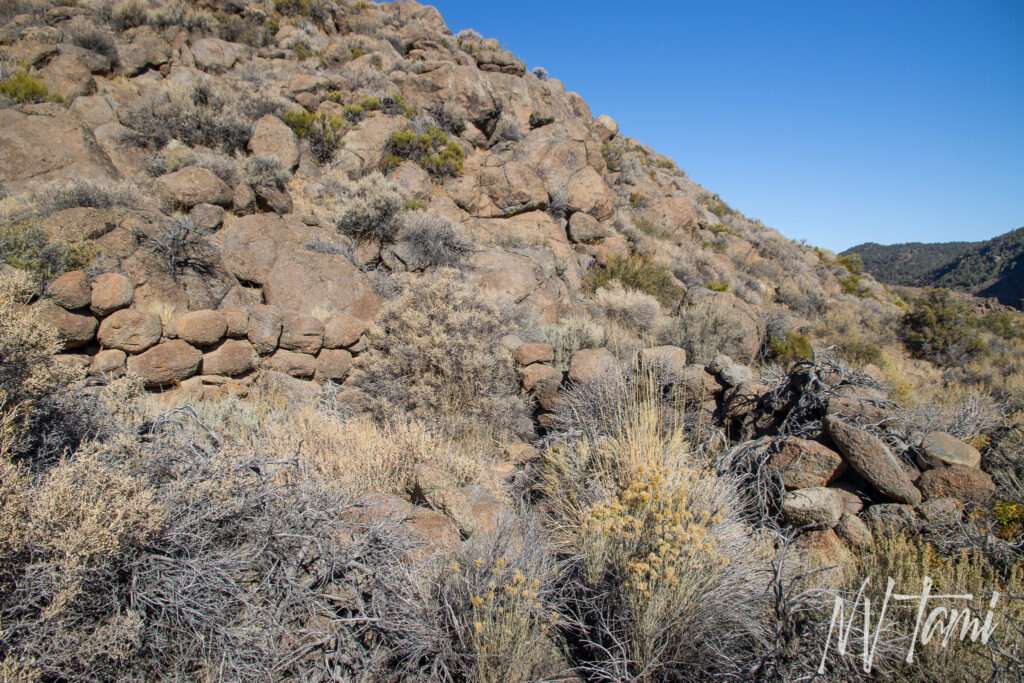
A town by any other name will smell just as… stinky
Dog Town sounds unique and quirky, but it was fairly common name in the Old West. There are two stories about the origins of the naming. Dog Town is the name miners gave to a location with miserable living conditions where they lived like dogs.

(Photo credit: National Park Service)
The second theory is more literal. A woman moved to town with three dogs. Dogs did what dogs do and got busy. The male miners were lonely and happy to buy a puppy. Before too long, K9s overran the Dog Town.

(Credit: Sheaffe Ephemera)
Sources spell the name multiple ways, including Dog Town, Dogtown, Dogtown Diggings. The California Office of Historic Preservation uses Dog Town, which was used in this article.
Chinese at Dog Town
In the 1860s, Chinese miners moved to Dog Town to rework tailings. Laws prohibited Chinese from mining in other locations but they were left alone in Mono County. Twenty miners worked for a decade. They had a small store, and houses had small green gardens in the front.

(Photo credit: Seton Hall University)
Mining companies took an interest in Dog Town in 1878 following strikes in Bodie. They patented large claims, but no significant production occurred.
Dog Town Cemetery

The grave at Dog Town is situated next to the dugout houses. It is fenced and has a marble marker, but no name is evident. It took some digging, but this is the final resting place of pioneer Peter Johann Anderson.
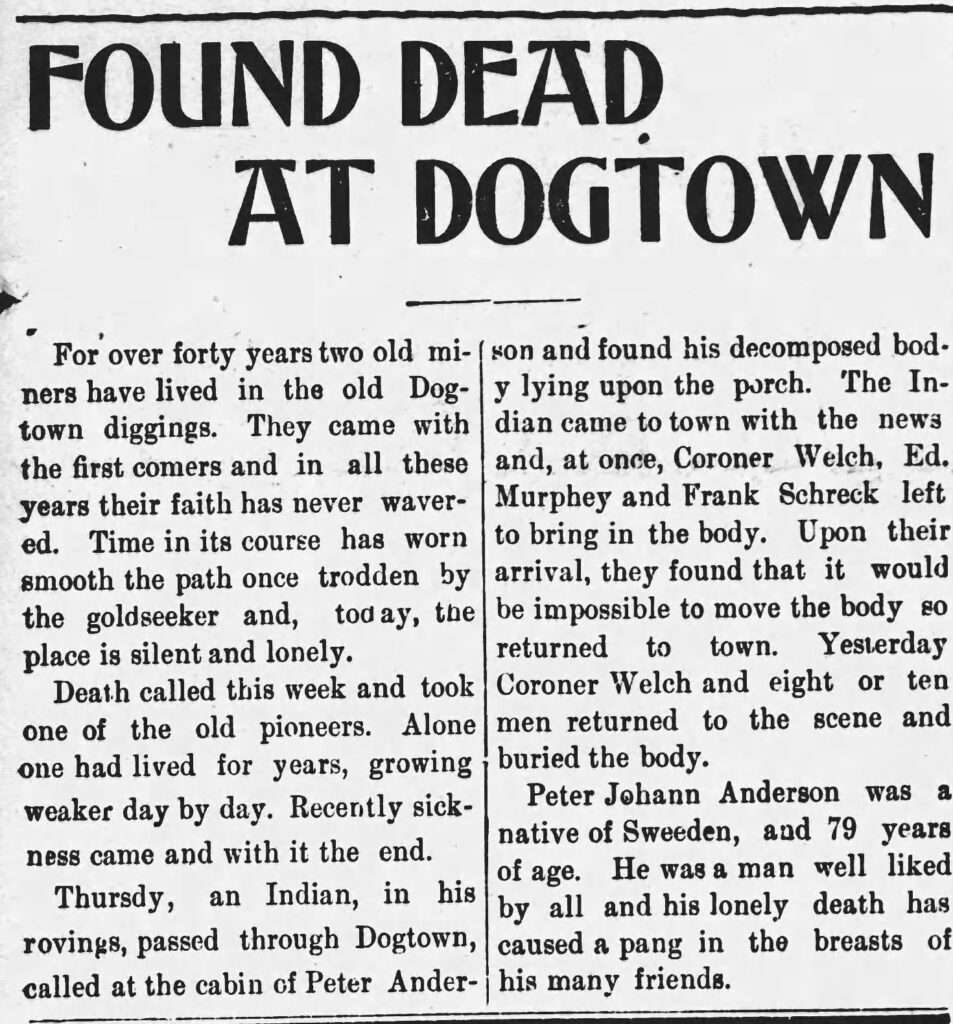
July 21, 1906
“An Indian” passing through found Peter’s body on his porch. Bridgeport Coroner Welch was notified of the discovery. The body was so severely decomposed that Welch and eight or ten men buried Peter close to the stone cabins instead of transporting it to Bridgeport for burial.
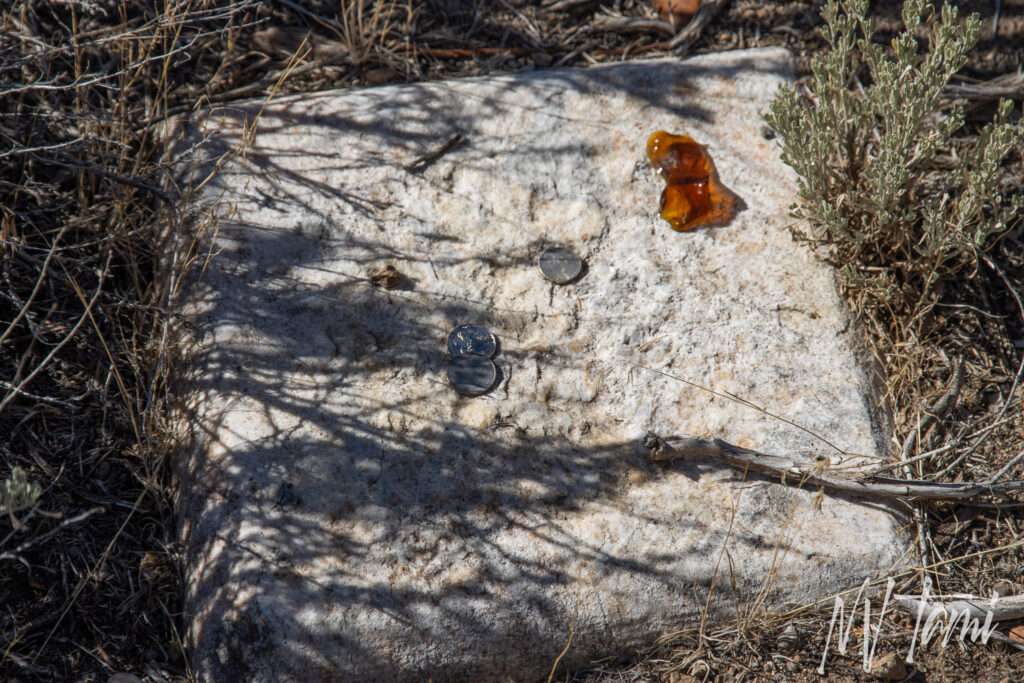
He was a man well liked by all and his lonely death has caused a pang in the breasts of his many friends.
Mono Herald and Bridgeport Chronicle-Union
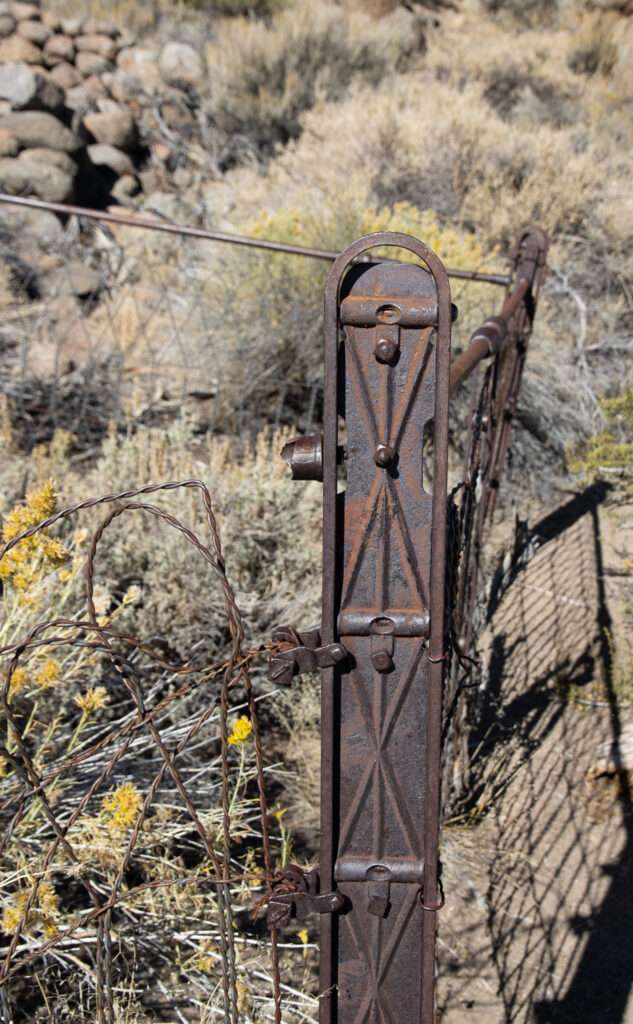
Virginia Creek crossing
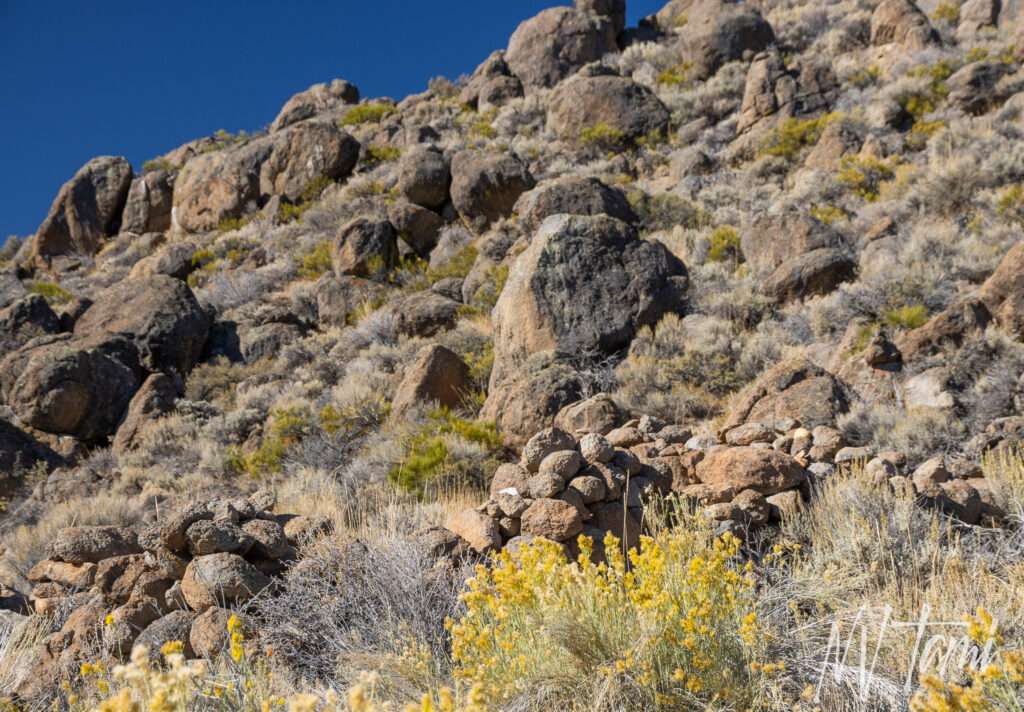
The road to Dog Town from Highway 395 crosses Virginia Creek. It is overgrown with willows and has water year-round. My first visit was in late September of 2022 and I was able to cross the creek in my Grand Cherokee.
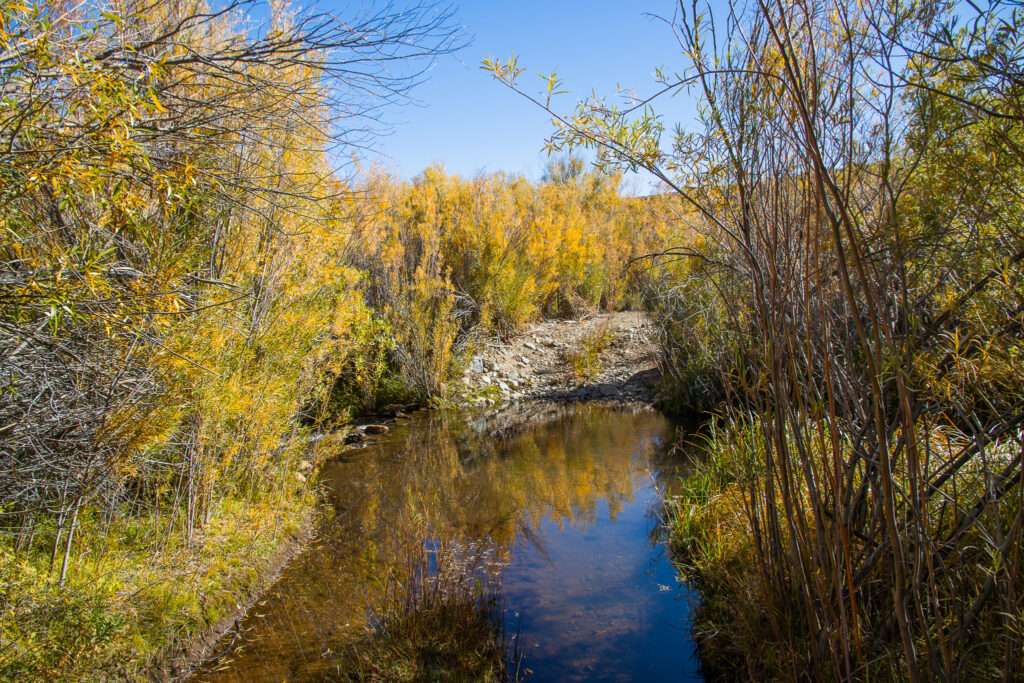
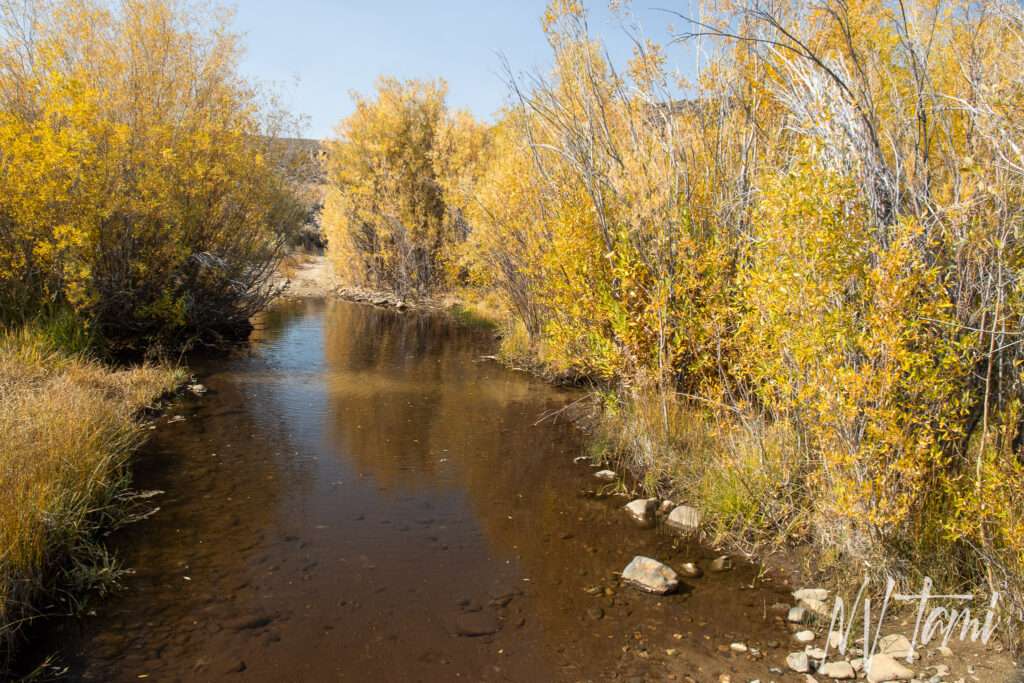
In September of 2023, the water was higher, and the mud was deep. There was evidence of people getting stuck and I didn’t want to cause additional road damage I opted not to cross, even in my Rubicon. Mostly, I didn’t want to deal with the cleanup!
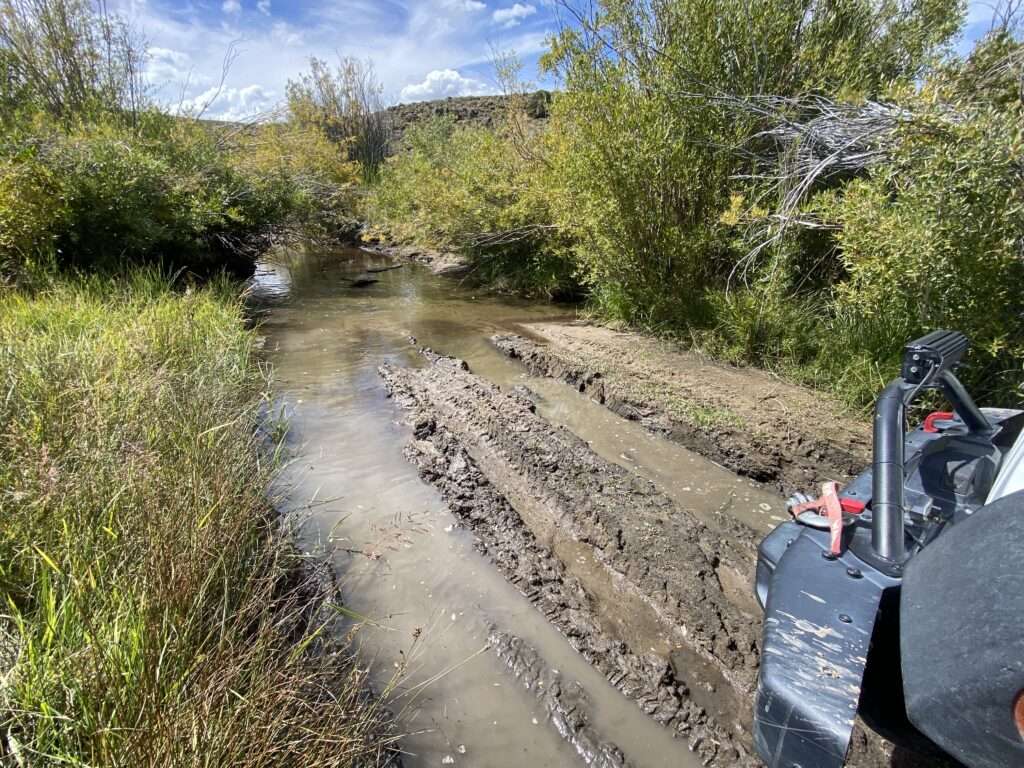
WANT MORE GHOST TOWNS?
For information on more than five hundred ghost towns in Nevada & California, visit the Nevada Ghost Towns Map or a list of Nevada ghost towns.
Learn about how to visit ghost towns safely.

References
References
- Atlas Obscura: Sinnamon Cut
- California Office of Historic Preservation: Monoville and Mono Diggings
- Calisphere
- DeDecker, Mary. Mines of the Eastern Sierra. La Siesta Press, 1993. Pages 15-16
- Explore Historic California: W. S. Bodey Revisited
- Guddle, Edwin G. California Gold Camps: A geographical and historical dictionary of camps, towns and localities where gold was found and mined: Wayside stations and trading centers. University of California Press, 1975. Pages 97-98, 221.
- Mitchell, Roger. Inyo-Mono SUV Trails. A guide to 40 interesting and scenic four-wheeling excursions in Inyo and Mono Counties. Track and Trail Publications: 2003. Pages 42-46.
- Mono Lake Committee: Pioneers and Miners
- The Natural Wealth of California: Comprising Early History; Geography, Topography, and Scenery; Climate; Agriculture and Commercial Products; Geology, Zoology, and Botany; Mineralogy, Mines, and Mining Processes; Manufactures; Steamship Lines, Railroads, and Commerce; Immigration, Population and Society; Educational Institutions and Literature; Together with a Detailed Description of Each County
- Nevada Appeal: California’s Dog of a mining camp
- Nevada Expeditions: Monoville, California
- Salley, H.E. History of California Post Offices. The Depot, 1991. Pages: 57, 139.
James Ritchie says
Dogtown! One Word!
Tami says
I checked multiple sites including historical refererences and it was spelled both ways. I went with the more common spelling. Also what is on the historical marker, which is what people will search for. Adding a clause about the seperate spelling isn’t a bad idea.
I would be happy to calmy discuss the various spellings.
Eric Kirchmann says
Dogtown is one mile North of Bolinas and Stinson Beach CA. SF Bay area over a hundred years old
Tami says
Dog Towns/Dogtown was apparently a popular name. I found reference to multiple towns of the same name all over the state and probably the west coast.